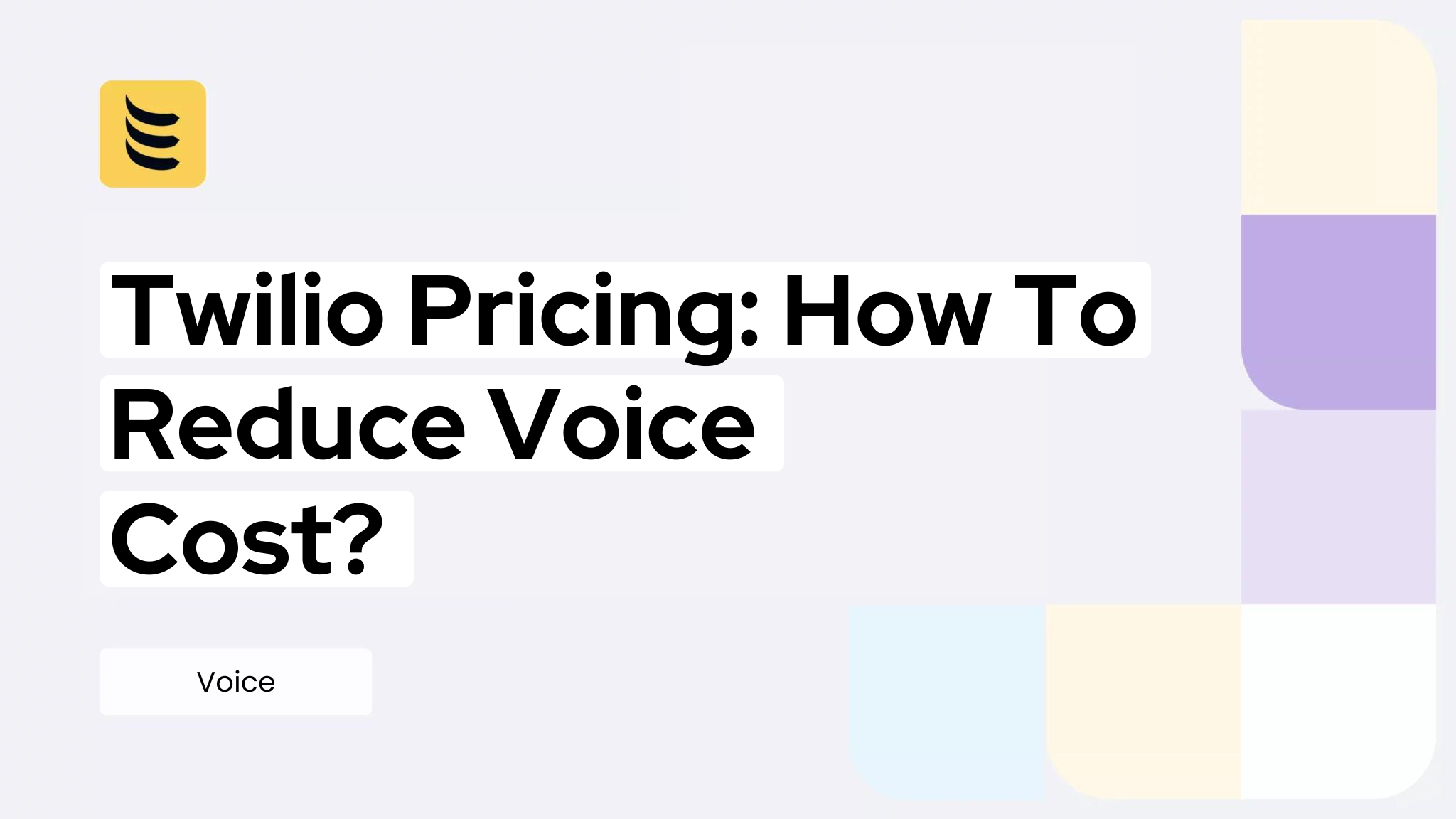A telephone contract is a long-term agreement: people don’t switch providers frequently, and it isn’t a decision that anyone takes lightly. A combination of loyalty and apprehension from consumers makes it difficult for VoIP providers to win new business.
As a telephony service, you need to be careful how you encourage customers to move from their current providers. There are new businesses starting up every day, but in order to effectively grow your customer base, you need to focus on more than just startups. And, therefore, you have to look for inorganic growth through these acquisitions.
The fear of losing an existing telephone number is a major factor that discourages people from switching telephony providers. Fortunately, thanks to VoIP technology, physical location is no longer a factor in phone number allocation and the right for customers to take their numbers with them when they switch providers is enshrined in law.
In order to combat this fear when trying to attract new customers, you need to build a script for your salesforce and Customer Service staff so that they are able to guide potential customers through the number porting process.
You should also have procedures in place to ensure that the number porting process runs as smoothly as possible. Delays in the transfer of a number give the customer more time to reconsider the switch to your services—and give the competitor an opportunity to fight back and come up with a counteroffer.
With this in mind, we’ve compiled a comprehensive guide to help you both attract and manage customers by improving your team’s knowledge of the number porting process.
Fact Check on the Number Porting Process
Your customers probably get caught out all the time when your staff is working through the phone number porting process. Unfortunately, standardized procedures and interaction scripts tend to stifle feedback.
When you train your staff to follow instructions precisely, and you try to get much of your business’s workflows enforced by your computer system, you discourage dissent. Making sure that your staff simply follows instructions is an efficient management technique. Discouraging staff from speaking out prevents unrest and preserves the business hierarchy of authority. However, it also institutionalizes procedural errors.
Frontline staff likely come up against the same problems every day. They know what’s going to go wrong when a new customer starts the number porting process because it went wrong last time, the time before, and every other time in exactly the same way.
Try setting up a process improvement project and put together a project team that includes representatives from all staff levels that are involved in the number porting process. You will find that changes will need to be made in both customer relations and business operations.
The Cost of Dropouts
Don’t log a sale until the entire onboarding process for a new customer completes. You haven’t won a new customer at the point where they sign a contract. Your sales process completes when the cooling-off period expires and new clients are using your services successfully and regularly.
Sales staff will be itching to record a win and move on to the next lead, but you need to make sure you aren’t wasting your sales and marketing budget through drop-outs caused by buyer remorse.
The competitors that you win customers from will put up a fight, so you need to box clever and the only weapon you have in this fight is customer relations.
Start by looking at your cancellation rate. Every customer that drops out between signing a contract and actually beginning to use the service represents lost revenue. That cancellation also represents wasted effort and builds up costs that need to be recovered on the next sale. Canceled contracts increase your overheads and make your business uncompetitive.
Improve Customer Relations
Marketing efforts are time-consuming: odds are you researched the market, tested your service package with focus groups, worked closely with an advertising agency, and put together a killer sales team.
You might be signing up lots of new customers but losing them before you generate any revenue. This signals a customer relations defect. The number porting process is a regular part of your business: your staff is comfortable with it and sees it as a straightforward part of the job. However, it is a complete mystery to your new customers.
As such, make sure that all of your client-facing staff approaches each new customer with a fresh attitude. This is not just another day of going through the motions. The number porting process is a worrying and potentially threatening change in the mind of the customer.
Switching telephone providers is a leap in the dark. You need to inspire confidence in sales leads so that they feel happy about leaving the safety of their current telephony contract and trust that they are coming over to a better experience with your company.
Provide Information

In addition to bucking up the attitude of your sales and contact staff, you need to give them all of the necessary information to answer customer questions authoritatively. If the sales staff has to make up answers, they are likely to give the wrong information. That risks scaring off the potential customer or setting your business up for failure by building unrealistic expectations.
The number porting process is both your biggest sales advantage and your greatest sticking point. The legal requirement to allow number porting disables the biggest weapon that any telephony provider has when trying to hold on to existing customers. A competitor is not going to tell its customers how they can move their numbers to your company; you are going to have to provide that information.
Legally, a telephony service can’t lie to customers when they ask about porting a number, but it can stretch the truth. Make sure that your entire frontline staff has all of the facts to enable them to combat any misinformation that the current providers of enquiring leads have tried to convey.
Thanks to the Internet, you have the ability to create well-informed leads. Make sure to include the information about the number porting process on your website. Customers are more likely to commit to your service by signing up online if all of the important information about the number porting process is there for them to find.
In addition, customers who prefer to avoid human contact will be easier for your sales staff to assist if they already have correct information about the number porting process from your website.
Provide Feedback
Long lead times in setting up a new account give customers the opportunity to panic and back out. Don’t keep them in the dark—that encourages them to make negative assumptions. Your competitors know this and may try to drag out the number transfer for as long as they legally can to make it look as though the delay is your fault.
Unfortunately, the number porting process is beyond your control. The task is performed by your carrier and the releasing carrier, and you can’t interfere and expedite. However, you can explain the process to the customer and ensure them that the delay is out of your hands.
Negative communications are an ineffective way to start off a relationship with a new customer. Use positive, informative messages to keep your customer informed, which can even be generated automatically. What you want to avoid is falling silent.
Keep in mind that you don’t want to pester your customers with unnecessary spam. However, you should also keep your customer informed on a daily basis. Create a status update format that has a consistent layout. The customers will come to expect the arrival of the daily update and be reassured that they haven’t been forgotten or fallen through the cracks.
A non-judgmental dated line on the statement, such as “Waiting for response from releasing carrier …” tells the customer where the blame lies for any delays.
Business Process Improvements
As time passes, you can expect your business to take on customers from your competitors. You should know which of them drag out the number porting process and which are less stubborn.
When you gather information about each number port, you will notice that each releasing carrier uses the same delaying tactics every time because each has its own workflows that include checks. It will then be possible to decode the number porting process of your competitors, and you can put that information into improving your own procedures to lead your customers through the number porting process.
Redefine Information Requirements
Once you are aware of the obstacles that releasing providers create in the number porting process, you should introduce new data-gathering steps to minimize those delays. Rivals will find loopholes in the Local Service Request that you send via your carrier to their carriers. All of this information comes from the Letter of Authorization that your new customer provides.
Tighten up the data-gathering process by creating clear instructions for the customer when filling out the Letter of Authorization. Create a form for the customer to fill in on the website from which you can generate the LOA.
Most VoIP providers ask the customer to provide a recent bill for fact-checking purposes. However, competitors know this and often use a different account address to the billing address, creating an instant information mismatch on your LSR that gives them a reason to reject the request. Guide your new customers to ask for a Customer Service Report from the current provider and use that as a source of data in the LOA.
Link your provider tricks database to the LOA creation process. Once your customer service operators enter the current provider, your data entry screens for LOA creation should be able to highlight the traps that the rival will spring so that specific data fields can be double-checked.
If you are able to head off the traps that your rivals will use to delay the transfer, you can speed up the number porting process and narrow that perilous lead time that provides room for buyer remorse.
Liaise with Your Carrier
The number porting process is a carrier-to-carrier procedure, but that doesn’t mean that you can’t be proactive to improve the entire workflow. Leading your customer through the number porting process involves more than just issuing guidance to the customer.
Set up a meeting with your carrier and suggest methods that you could deploy to improve information flows and shut down the errors that could arise in data transposition.
The creation of the Local Service Request is really the responsibility of your carrier. However, see if there is a way that you can complete that form inhouse and generate it automatically from the LOA form. If that isn’t acceptable, work out a way to transmit the relevant data digitally to the carrier in order for LSRs to be generated automatically. This will eradicate any spelling errors that could occur when transposing data from one form to another.
Create A Closed-Loop System
Effortlessly onboarding new customers is all about gathering the correct information and avoiding human error in the data flow from customer to LSR.
Equipping your staff with the facts of the transfer process eliminates the need for improvisation and builds trust in the new customer. If you can speed up the number porting process, you reduce the likelihood that your new customer will back out. Keeping your new customer informed as each step in the number porting process advances reduces panic and doubt.
All of these workflows can be performed more successfully when data is transferred automatically from one step in the process to the next. Create a closed-loop IT system to combat errors and lead your customers through the number porting process successfully.
What methods have you used to help your customers through the number porting process? Let us know below in the comments:




